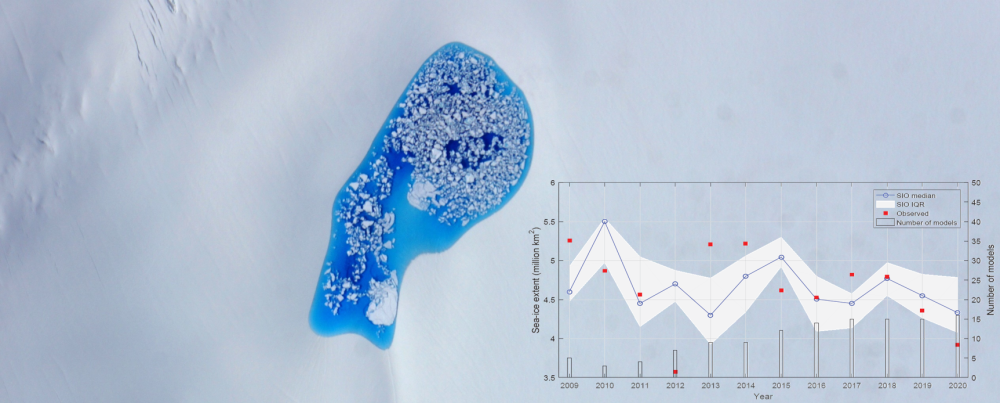A Lesson from Arctic Sea-ice Prediction in 2020: Accurate Subseasonal-to-seasonal Prediction Remains a Grand Challenge
Date:2021-04-29
As an indicator and "amplifier" of global climate change, the Arctic's health and stability is the cornerstone of the stability of our climate system. It has far-reaching impacts on ecosystems, coastal resilience, and human settlements in the middle and high latitudes.
The Arctic has experienced amplified warming and extensive sea-ice retreat in recent decades. On 15 September 2020, the Arctic sea-ice extent (SIE) reached its annual minimum, which, based on data from the National Snow and Ice Data Center, was about 3.74 million km2 (1.44 million square miles). This value was about 40% less than the climate average (~6.27 million km2) during 1980–2010. It was second only to the record low (3.34 million km2) set on 16 September 2012, but significantly smaller than the previous second-lowest (4.145 million km2, set on 7 September 2016) and third-lowest (4.147 million km2, set on 14 September 2007) values, making 2020 the second-lowest SIE year of the satellite era (42 years of data).
In 2020, a total of 39 institutions and organizations worldwide submitted their Sea Ice Outlook of the pan-Arctic September SIE. From the June to August SIO, the median of all predictions remained quite stable (4.33 million km2 in June, 4.36 million km2 in July, and 4.3 million km2 in August), which were much higher than the observed value of 3.92 million km2. This indicates that most forecasting systems overestimated the coverage of sea ice in September 2020.
Accurate prediction of Arctic SIE is still a worldwide problem. Recently, a commentary published in Atmospheric and Oceanic Science Letters summarized the predictions from 2009 to 2020, and found that most years' observed values (8 out of 12) fell outside the predicted interquartile range of dynamical models, indicating that it is still a grand challenge to accurately predict the Arctic SIE on subseasonal-to-seasonal (S2S) time scales, especially in extreme years.

Arctic Melt Pond in southeastern Alaska on July 16, 2014. (Photograph courtesy of the MABEL team; Plots by WEI Ke)
"Arctic sea-ice studies require an improved ability to make more accurate predictions and achieve a better understanding of the physics of sea-ice processes," says Prof. WEI Ke, author of this commentary and a scientist with the Institute of Atmospheric Physics, Chinese Academy of Sciences.
In the next step, more efforts should be made to assimilate sea-ice, atmospheric and oceanic observations to generate a skillful initialization. Meanwhile, sea-ice prediction relies on a skillful atmospheric model to produce a high-quality atmospheric forecast. Finally, S2S systems should have the ability to capture changes in sea-ice properties due to global warming, which produces younger and thinner sea ice along with more melt ponds. Thus, improved descriptions of sea-ice processes in sea-ice model components of prediction systems are needed.
Global warming is pushing the Arctic to a dangerous tipping point in which domino-like irreversible processes might be triggered. Therefore, it is essential to develop better Arctic sea-ice prediction systems to serve as the navigation lights to guide us through this uncharted future climate.
Reference: Wei, K., Liu, J.P., Bao, Q., He, B., Ma, J., Li, M., Song, M.R., Zhu, Z., 2021. Subseasonal to seasonal Arctic sea-ice prediction: A grand challenge of climate science. Atmospheric and Oceanic Science Letters 14, https://doi.org/10.1016/j.aosl.2021.100052
Media contact: Ms. LIN Zheng, jennylin@mail.iap.ac.cn
